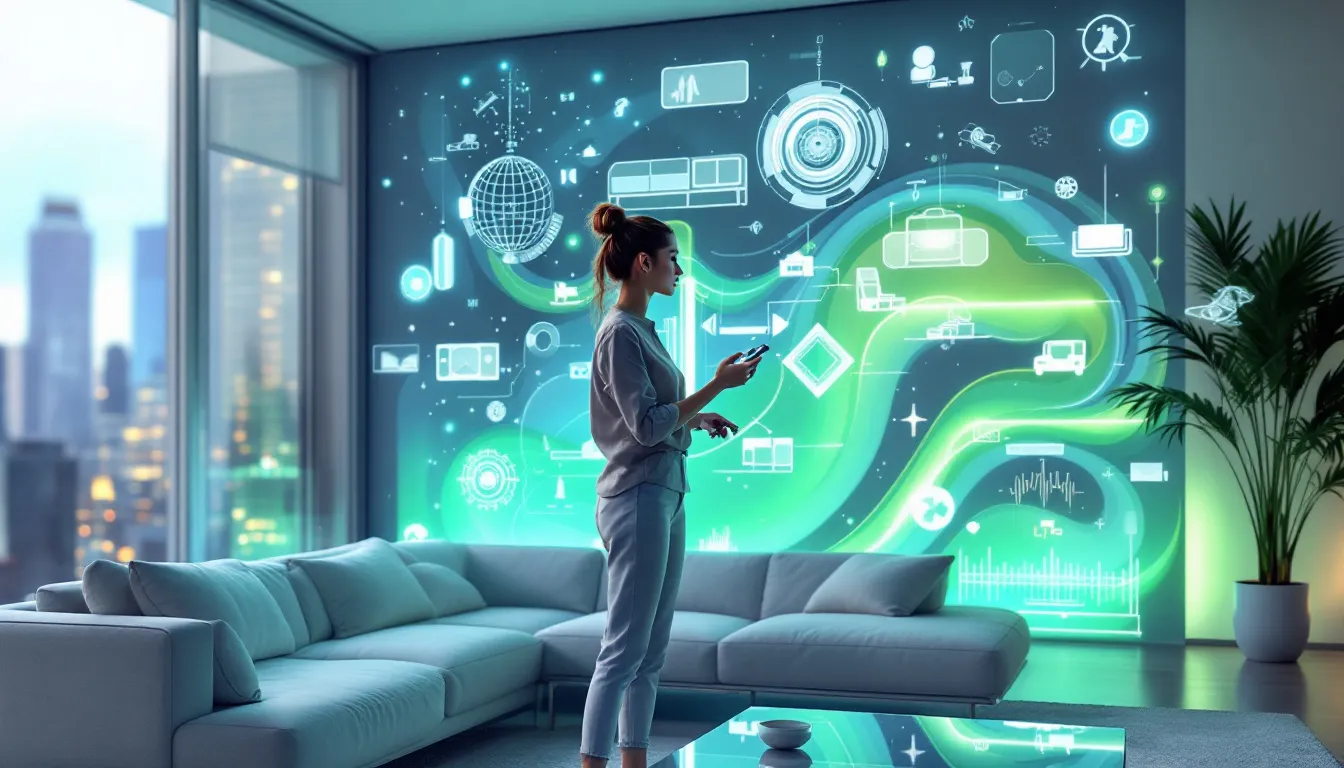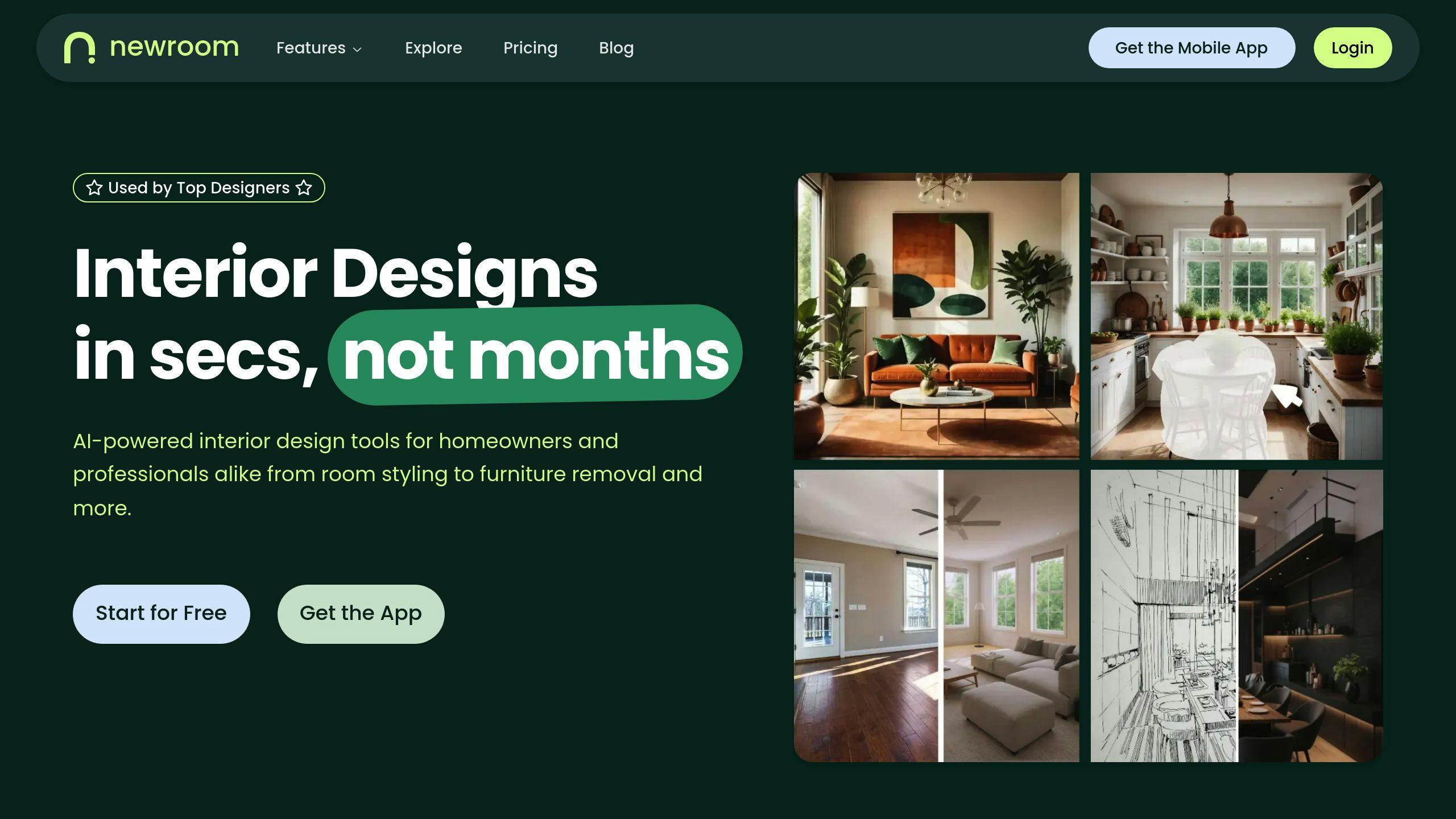
How AR Impacts Depth Perception: 8 Key Factors
AR is changing how we see and understand spaces. Here's what you need to know:
- AR boosts spatial skills, especially for engineering students
- It makes navigation easier with virtual overlays
- Tools like NewRoom.io help visualize interior design
- Display types affect depth perception accuracy
- Object properties like position and shadows impact perception
- Luminance changes perceived distance in surgical AR
- Higher contrast means greater perceived depth
- AR improves spatial ability in preschoolers learning shapes
AR offers many benefits for depth perception, but it's not perfect. Users might need time to adjust, and experience quality depends on the device.
Quick Comparison:
| Factor | Impact on Depth Perception |
|---|---|
| Display Type | Optical see-through more accurate than video see-through |
| Object Properties | Vertical position and shadows affect perception |
| Luminance | Brighter objects seem closer |
| Contrast | Higher contrast increases perceived depth |
| Education | Improves spatial ability test scores in preschoolers |
AR is reshaping how we interact with spaces, making design more accurate and efficient. As the tech improves, we'll see more precise and user-friendly apps across various fields.
Related video from YouTube
NewRoom.io

NewRoom.io is an AI interior design tool that's shaking up how we visualize spaces. It's not just for the pros - anyone can use it to reimagine their rooms.
Here's the gist:
- Snap a pic of your room
- Set your budget
- Pick from 20+ design styles
The AI then whips up a visual of your dream space. You see the makeover before spending a dime.
More Than Just Furniture
NewRoom.io digs deeper:
- It factors in room size
- Considers existing features like windows and doors
- Takes natural light into account
This creates designs that look good AND work in your actual space.
You're in Control
Want to tweak things? Go for it:
- Move furniture around
- Swap out items
- Play with color schemes
This hands-on approach helps you really get a feel for the space.
Bringing Light to Life
NewRoom.io doesn't just drop virtual furniture into your photo. It thinks about:
- What time of day it is
- Where the light's coming from
- How objects cast shadows
This attention to detail makes the AR experience feel real.
Picture this: You're designing your living room. The tool shows how evening light from your west-facing window casts shadows, changing the whole vibe of the space.
sbb-itb-cdfec70
Good and Bad Points
NewRoom.io has some cool features for AR depth perception, but it's not perfect. Let's break it down:
| Pros | Cons |
|---|---|
| AI design tools | Learning curve |
| Quick virtual staging | Device-dependent quality |
| Realistic lighting | Might miss some real-world details |
| Interactive | Limited design styles |
The Good
AI design tools: NewRoom.io's AI speeds up the design process. You can see your ideas come to life faster than ever.
Quick virtual staging: See how new furniture looks in your space without moving a thing. It helps you get a feel for depth and space in no time.
Realistic lighting: The tool considers time of day and light sources in your room. This makes the AR experience feel more real and improves depth perception.
Interactive: Move stuff around, swap items, and play with colors. This hands-on approach helps you understand how things fit in your space.
The Not-So-Good
Learning curve: It takes time to figure out NewRoom.io. This might slow you down at first.
Device-dependent: Your AR experience quality depends on your device. Older phones or tablets might not give you the best view.
Misses some details: NewRoom.io is good, but it might not catch every little thing in your real room. This could affect depth perception in some cases.
Limited styles: You've got 20+ design styles to choose from. But if you want something super specific, you might feel limited.
The Bottom Line
NewRoom.io is a solid tool for AR depth perception, but it's not flawless. Use it to help your design process, not replace your judgment.
As AR tech grows, tools like NewRoom.io will likely get better. For now, it's a useful way to visualize your space before moving real furniture.
Wrap-up
AR is changing how we see and interact with our world. Here's how it impacts our spatial understanding:
1. Boosting spatial skills
AR training improves spatial abilities, especially for engineering students. This leads to better performance in STEM fields.
2. Making navigation easier
AR overlays, like the Virtual Global Landmark technique, help users learn about their surroundings without overloading their brains.
3. Visualizing interior design
Tools like NewRoom.io use AR to show how furniture fits in a space, considering lighting and room layout.
4. Display types matter
| Display Type | Depth Perception Effect |
|---|---|
| Video see-through | May underestimate distances more |
| Optical see-through | Generally more accurate |
5. Object properties affect perception
Vertical position and cast shadows of virtual objects impact how we perceive depth in AR.
6. Luminance changes perceived distance
In surgical AR, brighter objects seem closer to the camera. This helps improve depth perception in laparoscopic surgeries.
7. Contrast plays a role
Higher contrast means greater perceived depth. You can estimate depth distance using: Depth_Distance ≈ 10 × Luminance_Contrast.
8. Early education benefits
AR virtual manipulatives improve spatial ability test scores in preschoolers learning geometric shapes.
AR offers many benefits for depth perception, but it's not perfect. Users might need time to get used to new AR tools, and the experience quality depends on the device.
As AR tech improves, we'll see more precise and user-friendly apps across education, healthcare, and other fields.
FAQs
Can augmented reality improve problem-solving and spatial skills?
Yes, AR can boost both problem-solving and spatial skills. Here's how:
1. Enhancing spatial abilities
AR lets users see and interact with 3D objects in real space. This hands-on experience sharpens spatial reasoning.
A study of 62 Civil Engineering freshmen found AR training significantly improved their spatial skills and grades. The 31 students who got AR training showed big improvements.
2. Boosting problem-solving
Better spatial skills often lead to better problem-solving. They're closely linked.
In a study with 34 fifth-graders, researchers used the Mental Rotation Test (MRT) to measure spatial skills. After using AR, the kids' MRT scores jumped way up.
3. Real-world uses
AR's impact on spatial and problem-solving skills has practical benefits:
| Field | How AR Helps |
|---|---|
| Education | Makes complex 3D concepts easier to grasp |
| Engineering | Helps visualize and tweak designs |
| Healthcare | Improves surgical planning and execution |
"Many studies show AR improves these skills. Experts say spatial and problem-solving skills are linked. When AR boosts spatial skills, problem-solving gets better too, and vice versa." - Expert Opinion
As AR tech gets better, we'll likely see more ways it can sharpen these key thinking skills.